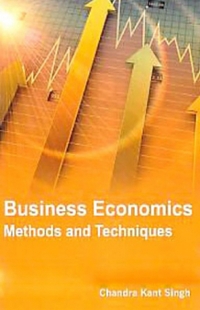Question
A) Choose the correct answer. S-3 i) When an economist uses the term cost referring to a firm, the economist refers to the A) explicit
A) Choose the correct answer. S-3
i) When an economist uses the term "cost" referring to a firm, the economist refers to the
A) explicit cost of producing a good or service.
B) price of the good to the consumer.
C) cost that can be actually verified and measured.
D) opportunity cost of producing a good or service, which includes both implicit and explicit cost.
E) implicit cost of producing a good or service.
ii) Which of the following is an explicit cost of production?
A) wages paid to workers
B) the electric bill
C) purchases of raw material
D) Only answers A and B are explicit costs because the purchases of raw material is only an opportunity cost.
E) Answers A, B, and C are all correct.
iii) ________ cost is defined as a cost of production that does not entail a direct money payment.
A) A fixed
B) An implicit
C) A marginal
D) An explicit
E) A total
iv) The marginal product of labor equals the change in ________ from a oneunit increase in the quantity of labor.
A) the slope of the average product curve
B) average product
C) total product
D) total cost
E) the wage rate 6*0.5=3
v) Which of the following costs can be positive when output is zero?
A) total variable cost
B) marginal cost
C) total fixed cost
D) average variable cost
E) None of the above because when output is zero there are no costs.
vi) Which of the following always decreases when output increases?
A) average variable cost
B) average fixed cost
C) marginal cost
D) total cost
E) total fixed cost
B)Choose the correct answer. S-4
i) The price charged by a perfectly competitive firm is
A) higher the more the firm produces.
B) different than the price charged by competing firms.
C) the same as the market price.
D) indeterminate.
E) lower the more the firm produces.
ii) Patents
A) remove legal barriers to entry.
B) are prohibited in the United States.
C) are a legal barrier to entry.
D) decrease the incentive to innovate.
E) create economies of scale.
iii) A natural monopoly
A) occurs when one firm controls a natural resource.
B) arises when one firm can meet the entire market demand at a lower average total cost than two or more firms.
C) arises as a result of legal barriers to entry.
D) Both answers A and B are correct.
E) Both answers A and C are correct. 6*0.5=3
iv) When a firm adopts new technology, generally its
A) cost curves are unaffected.
B) cost curves shift downward.
C) production permanently decreases.
D) supply curve shifts leftward.
E) cost curves shift upward.
v) A perfectly competitive firm definitely earns an economic profit in the short run if price is
A) equal to average total cost.
B) greater than average total cost.
C) greater than average variable cost.
D) equal to marginal cost.
E) greater than marginal cost.
vi) A perfectly competitive firm will continue to operate in the short run when the market price is below its average total cost if the
A) marginal cost is minimized.
B) price is at least equal to the minimum average variable cost.
C) price is also less than the minimum average variable cost.
D) marginal revenue is greater than marginal cost.
E) total fixed costs are less than total revenue.
Step by Step Solution
There are 3 Steps involved in it
Step: 1

Get Instant Access to Expert-Tailored Solutions
See step-by-step solutions with expert insights and AI powered tools for academic success
Step: 2

Step: 3

Ace Your Homework with AI
Get the answers you need in no time with our AI-driven, step-by-step assistance
Get Started


